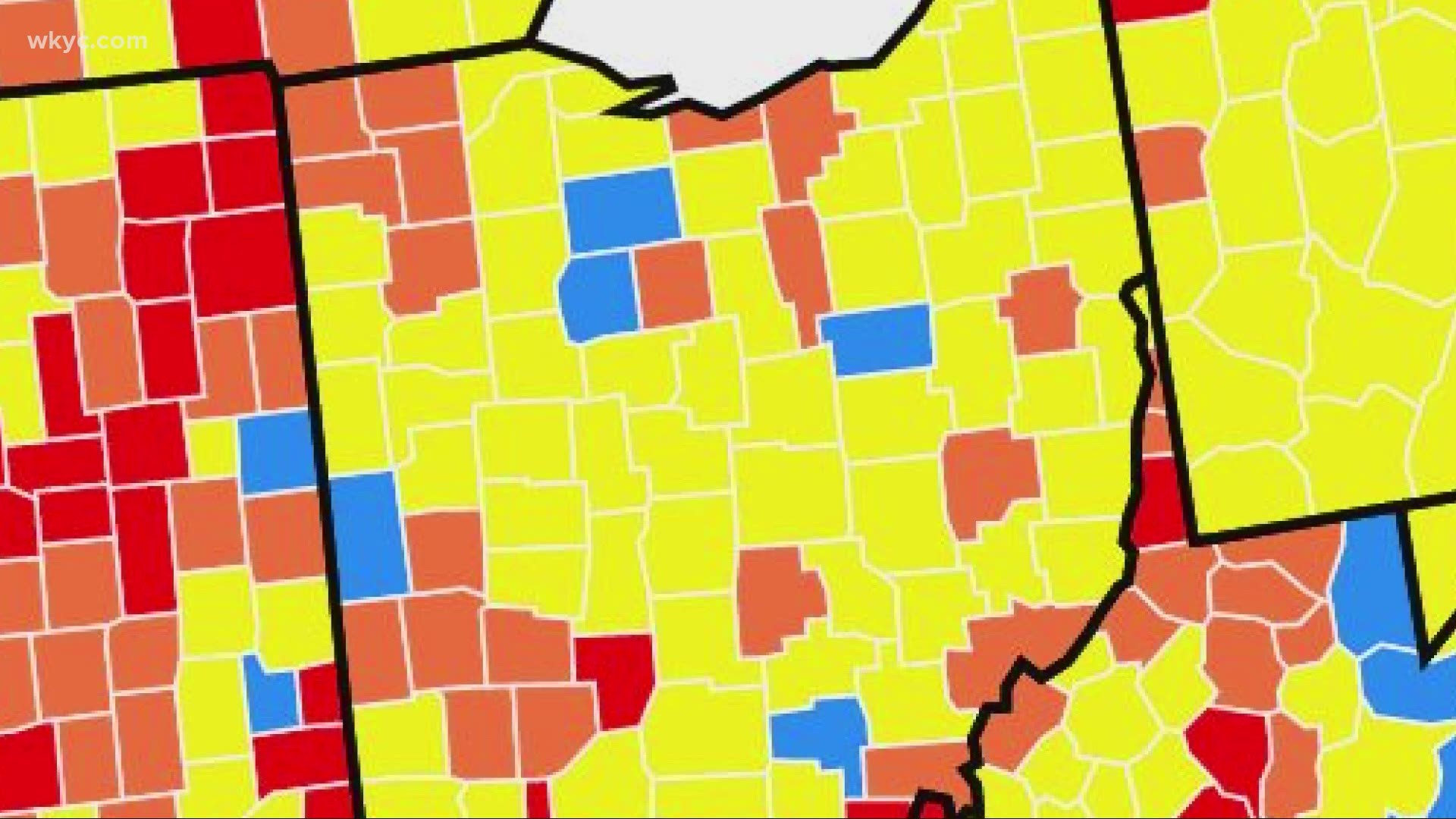ELYRIA, Ohio — Four Northeast Ohio counties reached the orange level on a CDC map that tracks coronavirus spread Wednesday. That's less than 24 hours after the map's initial release, which shows those same counties were yellow.
Ashland, Carroll, Erie and Lorain counties reached what the CDC calls a "substantial" level of COVID-19 spread, according to the map. This means the center is recommending all residents in those areas should wear masks while in public, indoor spaces, regardless of vaccination status.
"I was a little surprised because [the threshold] is actually 50 per 100,000," Lorain County Health Commissioner Dave Covell told 3News. "We're actually just under, though: It's 49."
The CDC tracks and updates the data based on the number of new cases per 100,000 (in this case 50) and the percentage of positive tests within a seven-day period. Covell said cases have been rising some as the delta variant continues to spread.
"As the delta virus, delta variant, moves in, we will continue to see more cases among the unvaccinated," Covell said. "Most counties up here in the Northeast Ohio have a pretty good vaccination rate, including Lorain county."
3News tracked the vaccination rates for the counties now in the orange level. According to the CDC, the percentage of those fully vaccinated stands at:
- 50.2% in Lorain County
- 48.1% in Erie County
- 34.9% in Carroll County
- 32.7% in Ashland County
Yellow shows "moderate" spread, while blue is considered "low." The only county in the region at that lowest level is Holmes, despite having only 14.2% of its residents fully vaccinated.
"Some folks who have mild symptoms of COVID aren't going to get tested' and so as that happens, you'll get less cases in that particular case," Covell explained.
3News asked Ohio's Department of Health how it plans to mitigate the rise in cases and is awaiting for a response. In an email response from the governor's office with the same questions, a spokesperson told us, "The Ohio Department of Health has a team which tracks these numbers daily. Getting the COVID vaccine is still the best way to protect yourself and loved ones from COVID."
"I can’t say it loudly enough: People need to go get vaccinated," Covell declared.

